Environment and Ecology: October 2024 Current Affairs | General Test Preparation for CUET UG - CUET Commerce PDF Download
EnviStats India 2024: Environment Accounts
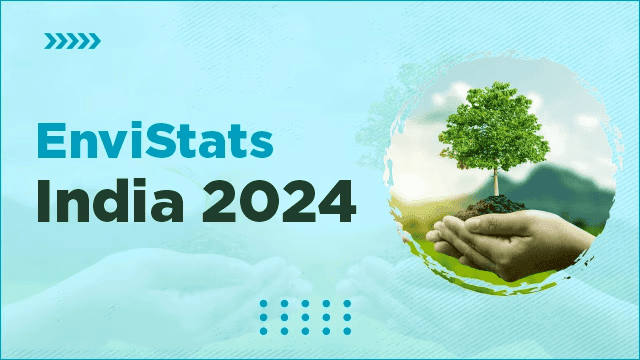
Why in news?
The Ministry of Statistics and Programme Implementation (MoSPI) has released the seventh consecutive issue of the publication "EnviStats India 2024: Environment Accounts". This document provides a comprehensive overview of environmental statistics in India, focusing on various ecological aspects.
About EnviStats India 2024
- The publication is compiled in alignment with the System of Environmental-Economic Accounting (SEEA).
- The current edition covers key areas including Energy Accounts, Ocean Accounts, Soil Nutrient Index, and Biodiversity.
Highlights EnviStats India 2024
- From 2000 to 2023, there has been an approximately 72% increase in the number of protected areas and a 16% increase in the area designated as Total Protected Area.
- The coverage of mangroves, vital components of ocean ecosystems, has seen an 8% increase from 2013 to 2021.
- The report includes data on the taxonomic diversity of both fauna and flora in India, highlighting the status of species such as the Leopard and Snow Leopard.
- Information on Genetic Conservation has been compiled using data from relevant ministries and agencies.
- Species richness data from the International Union for Conservation of Nature (IUCN) Red List of Threatened Species has been organized by taxonomic groups using spatial datasets from IUCN.
What is the System of Environmental-Economic Accounting?
- SEEA is an internationally recognized statistical standard that describes the interactions between the economy and the environment.
- It focuses on stocks and changes in environmental assets, integrating insights from various disciplines to enhance environmental economic accounts.
There are two components of SEEA
- SEEA-Central Framework (SEEA-CF): Focuses on individual environmental components that provide resources and space for economic activities.
- SEEA-Ecosystem Accounting: A complementary framework that offers a comprehensive approach for organizing data on habitats and landscapes, measuring ecosystem services, tracking changes in ecosystem assets, and linking this information to economic activities and human behavior.
International Energy Efficiency Hub

Why in news?
Recently, the Union Cabinet of India has signed a Letter of Intent, which allows India to become a member of the International Energy Efficiency Hub (IEEH). This hub is a global initiative aimed at promoting energy efficiency through collaboration among various stakeholders.
- The IEEH serves as a platform where governments, international organizations, and private sector companies can unite to exchange knowledge, share best practices, and develop innovative solutions for enhancing energy efficiency.
- By joining the IEEH, India will have access to a comprehensive network of experts and resources, which is expected to bolster its domestic efforts in improving energy efficiency.
- The Bureau of Energy Efficiency (BEE) has been appointed as the official agency responsible for implementing the IEEH initiatives in India.
- As of July 2024, a total of 16 countries have joined the IEEH, including prominent nations such as China, France, Germany, Japan, South Korea, Russia, Saudi Arabia, the United States, and the United Kingdom.
- The IEEH was founded in 2020, succeeding the International Partnership for Energy Efficiency Cooperation (IPEEC), of which India was a participant.
Greening of Antarctic Peninsula
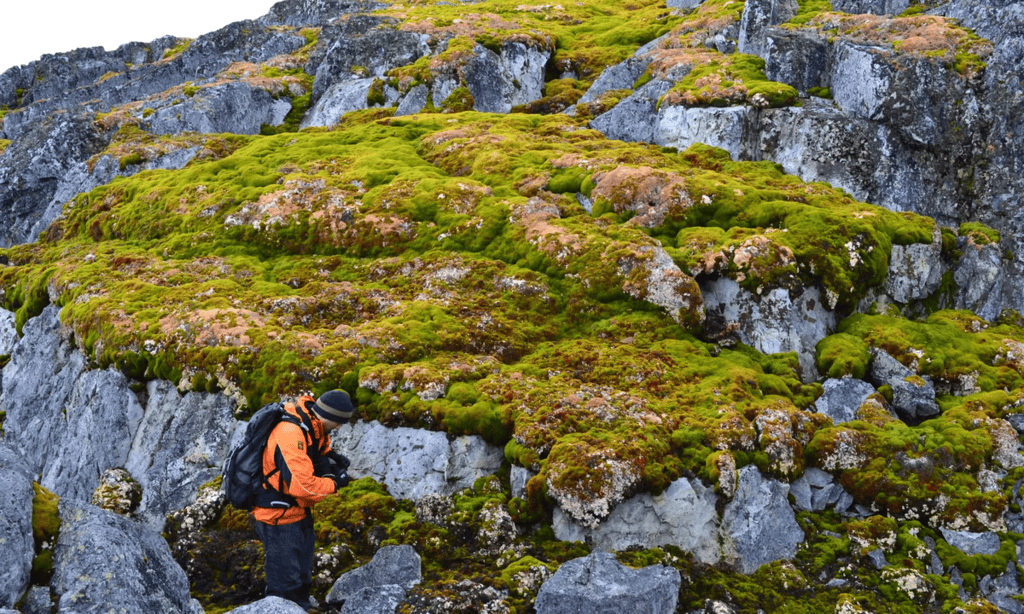
Why in news?
The Antarctic Peninsula has witnessed a significant increase in vegetation over the years, with the area covered by plants expanding from less than 1 square kilometer in 1986 to nearly 12 square kilometers by 2021. The rate of vegetation change between 2016 and 2021 was recorded at 0.424 kilometers per year, which is a notable increase compared to the long-term average of 0.317 kilometers per year over the 35-year study period.
- Development of moss ecosystems can foster the formation of organic soils, enhancing the potential for higher rates of plant colonization.
- However, this greening raises concerns about the risk of introducing non-native and invasive species into the ecosystem.
- Mosses act as pioneer species, initiating ecological succession, which is the gradual process of change in species composition in a given area as the environment evolves.
- This greening phenomenon is largely attributed to accelerated warming in the region, with temperatures rising five times faster than the global average.
- The Antarctic Peninsula Ice Sheet is particularly vulnerable to climate change, primarily due to its small size and northerly position.
- Since the 1950s, the region has experienced an approximate temperature increase of nearly 3°C.
- As glaciers continue to retreat, more land becomes available for plant colonization, which further accelerates the greening process.
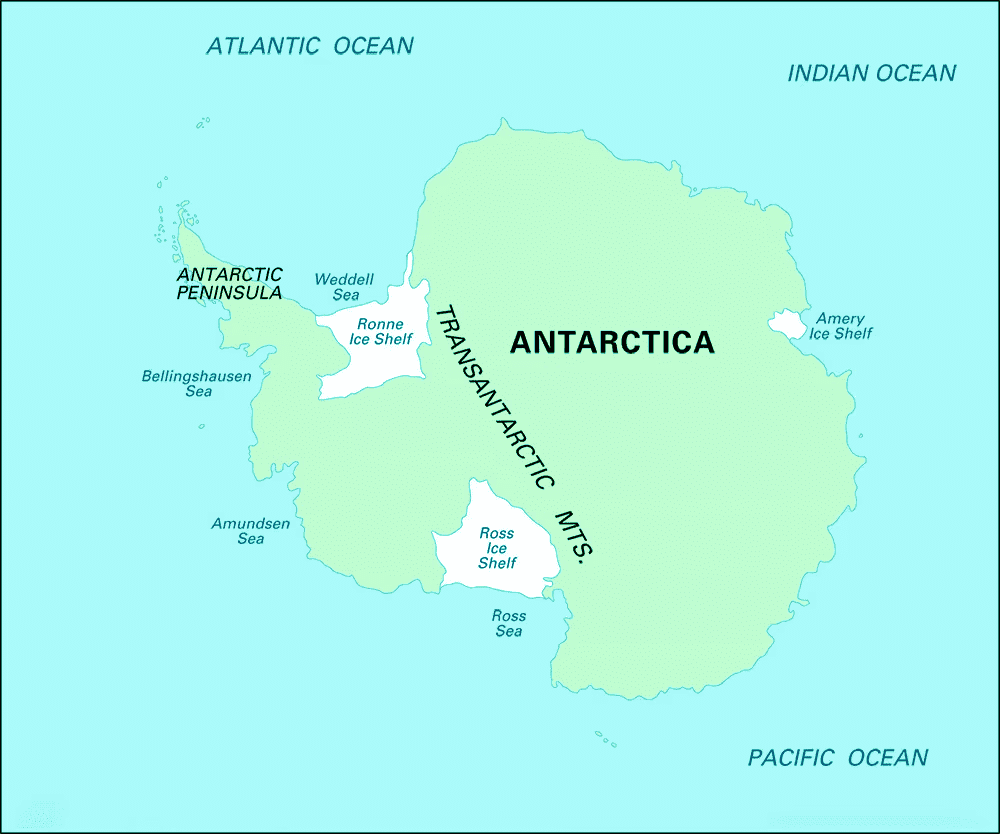
Sustainable Agriculture to Recover Groundwater
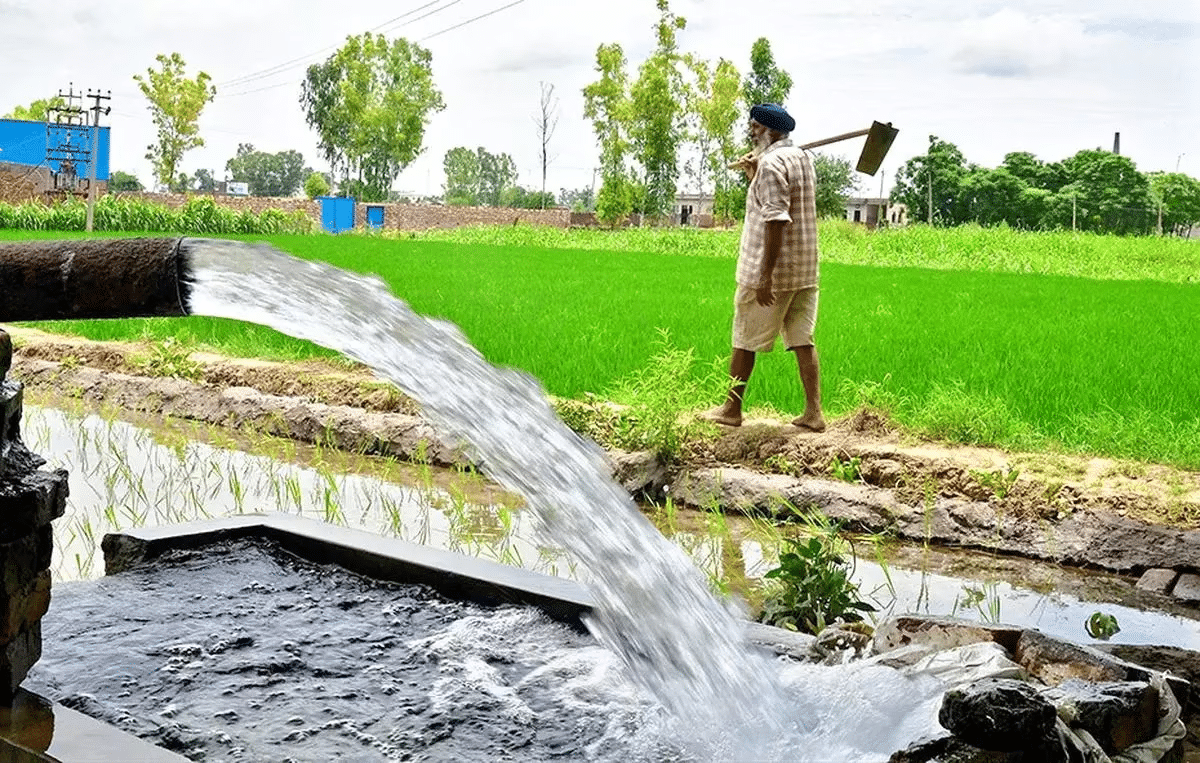
Why in news?
According to research from the Indian Institute of Technology Gandhinagar, Gujarat, replacing approximately 40% of the current rice cultivation area with alternative crops could help recover between 60 to 100 cubic kilometers of groundwater that has been depleted in northern India since 2000.
What are the Key Points of the Study?
- The current agricultural practices, particularly those focused on rice farming, heavily rely on groundwater for irrigation.
- Rising global temperatures are leading to the depletion of groundwater reserves, with estimates suggesting a loss of between 13 to 43 cubic kilometers.
- If unsustainable cropping patterns continue, they will further strain the already overexploited groundwater resources, worsening water security issues.
- There is an urgent need for adaptive strategies in cropping to mitigate the ecological crisis stemming from agricultural practices that deplete groundwater.
Impact of Climate Change
- Keeping the existing agricultural methods under global warming scenarios of 1.5 to 3°C will lead to a much lower recovery of groundwater, estimated at only 13 to 43 cubic kilometers.
- The 2018 Special Report by the Intergovernmental Panel on Climate Change (IPCC) warns that if current trends continue, global warming is expected to reach 1.5°C between 2030 and 2050, potentially rising to 3°C by 2100.
Recommendations
- The report highlights the critical need to change crop patterns, particularly in Punjab, Haryana, and Uttar Pradesh, to improve groundwater sustainability while ensuring the profitability of farmers.
- It suggests a shift towards growing cereals in Uttar Pradesh and oilseeds in West Bengal as alternatives to rice.
- These findings carry significant policy implications, indicating that suitable crop patterns need to be established for sustainable groundwater management in northern India's irrigated regions while protecting farmers' livelihoods.
What are the Challenges Related to Sustainable Agriculture in India?
- Water Scarcity: The heavy reliance on water-intensive crops and inefficient irrigation methods has led to groundwater depletion and water shortages.
- Unpredictable Weather Patterns: Increasing temperatures and the rising frequency of extreme weather events, such as floods and droughts, adversely affect crop yields and agricultural sustainability.
- Fragmented Landholdings: Small and fragmented farms hinder the adoption of sustainable agricultural practices, mechanization, and efficient resource utilization.
- Overuse of Chemical Inputs: The excessive application of chemical fertilizers, pesticides, and herbicides has resulted in soil and water pollution, which threatens ecosystems and long-term agricultural productivity.
- Inadequate Policy Support: Lack of sufficient government policies and incentives that promote sustainable farming practices restrict the transition to eco-friendly agriculture.
Way Forward
- Promote Water-Efficient Practices: Encourage the adoption of water-saving technologies like drip irrigation and rainwater harvesting, alongside crop diversification towards less water-intensive crops to tackle water scarcity.
- Enhance Farmer Training and Awareness: Implement extensive training programs and workshops to inform farmers about sustainable agricultural practices, including organic farming, agroforestry, crop rotation, and integrated pest management.
- Strengthen Policy and Incentive Support: Develop and execute robust policies that incentivize sustainable farming through subsidies, grants, and tax exemptions for eco-friendly technologies and inputs.
- Improve Access to Technology and Markets: Provide access to modern sustainable agricultural technologies and establish efficient supply chains and market connections for farmers to sell organically and sustainably grown products at equitable prices.
- Encourage Research and Innovation: Invest in research and development focused on sustainable agricultural techniques, climate-resilient crops, and affordable environmentally friendly inputs, while fostering collaboration between government bodies, research organizations, and farmers.
Mains Question
Q: Discuss the significance of sustainable agricultural methods in addressing the groundwater crisis in India?
India’s Biodiversity Targets Under CBD
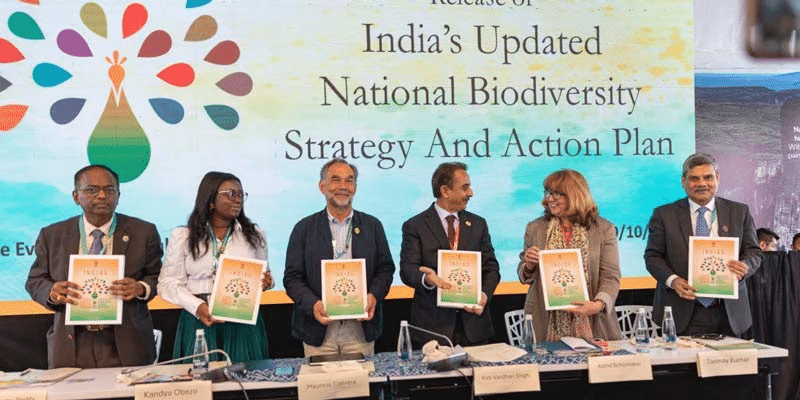
Why in News?
Recently, India is preparing to present its National Biodiversity Targets to the United Nations Convention on Biological Diversity (CBD). This is in line with the Kunming-Montreal Global Biodiversity Framework (KMGBF). Article 6 of the CBD mandates all parties to devise national strategies, plans, or programs for the conservation and sustainable use of biodiversity. India is expected to disclose its 23 biodiversity targets during the upcoming 16th Conference of the Parties to the CBD (CBD-COP 16) in Cali, Colombia.
What is India’s Biodiversity Target Under CBD?
- Conservation Areas: Aim to effectively conserve 30% of designated areas to bolster biodiversity.
- Invasive Species Management: Target a 50% decrease in the introduction and establishment of invasive alien species.
- Rights and Participation: Ensure the active involvement and rights of indigenous peoples, local communities, women, and youth in biodiversity conservation initiatives.
- Sustainable Consumption: Promote sustainable consumption practices and aim to cut food waste by half.
- Benefit Sharing: Encourage fair and equitable sharing of benefits derived from genetic resources, digital sequence information, and associated traditional knowledge.
- Pollution Reduction: Commit to reducing pollution, including a halving of nutrient loss and pesticide risks.
- Biodiversity Planning: Manage all areas to minimize loss in regions that are crucial for biodiversity.
What is the Kunming-Montreal Global Biodiversity Framework (KMGBF)?
- About: This multilateral treaty aims to halt and reverse global biodiversity loss by 2030. It was adopted in December 2022 during the 15th meeting of the Conference of the Parties (CoP). The framework supports Sustainable Development Goals (SDGs) and builds on the achievements and lessons learned from the Strategic Plan for Biodiversity 2011–2020.
- Purpose and Goals: The KMGBF ensures that a significant portion of degraded terrestrial, inland water, and marine coastal ecosystems are effectively restored. It features 23 actionable global targets designed for urgent action over the next decade, leading towards long-term goals for 2050. It's essential to understand that these targets reflect collective global efforts rather than a mandate for each country to allocate specific percentages of its land or water.
- Long-Term Vision: The framework envisions a future where there is a unified commitment to coexist harmoniously with nature, serving as a fundamental guide for current actions and policies focused on biodiversity conservation and sustainable utilization.
How India Can Achieve the New Biodiversity Goals?
- Habitat Connectivity: Prioritize the conservation of underrepresented ecosystems such as grasslands, wetlands, and seagrass meadows. Well-connected protected areas integrated into larger landscapes and seascapes can facilitate species movement and enhance biodiversity.
- Mobilising Financial Resources: Advocate for financial support from developed nations to effectively implement national biodiversity action plans. The KMGBF calls for developed countries to mobilize at least USD 20 billion annually by 2025 and USD 30 billion by 2030 for biodiversity initiatives in developing countries.
- Co-Management Models: Develop frameworks that encourage the co-management of conservation efforts involving indigenous peoples and local communities, which can enhance the efficacy of protected areas while supporting community livelihoods.
- Integrating OECMs: Shift focus from traditional protected areas to Other Effective Area-Based Conservation Measures (OECMs), allowing biodiversity conservation in regions with fewer restrictions on human activities, including support for traditional agricultural practices and privately owned lands that aid conservation efforts.
- Reforming Agricultural Subsidies: Redirect support from harmful agricultural practices, such as pesticide use, towards sustainable alternatives that promote ecosystem health.
- Alignment with Previous Targets: Build upon the existing National Biodiversity Action Plan (NBAP) and align it with the new 23 targets of the KMGBF to create a cohesive strategy for biodiversity conservation in India.
Conclusion
India's commitment to achieving its biodiversity targets through 23 specific goals demonstrates a strategic approach to conserving ecosystems and enhancing community involvement. By prioritizing neglected habitats, mobilizing resources, and reforming agricultural practices, India can effectively strive towards realizing its biodiversity objectives by 2030.
Mains Question
Q: Discuss the significance of the Kunming-Montreal Global Biodiversity Framework (KMGBF) for global biodiversity conservation.
Living Planet Report 2024
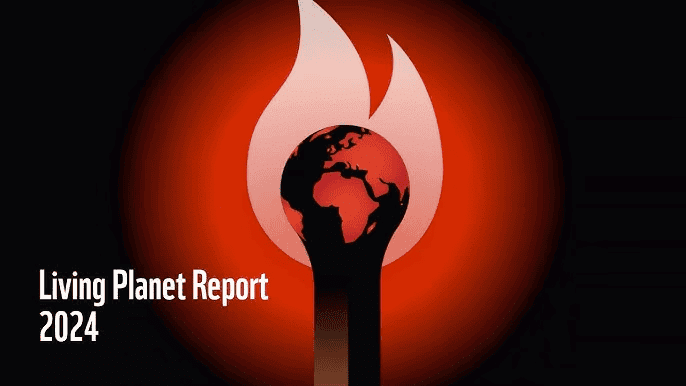
Why in news?
According to the World Wide Fund for Nature (WWF), there has been a catastrophic 73% decline in the average size of monitored wildlife populations over the last 50 years (1970-2020). The most significant decline occurred in freshwater ecosystems (85%), followed by terrestrial ecosystems (69%) and marine ecosystems (56%).

What is the Living Planet Report and its Key Findings?
About:
- The WWF uses the Living Planet Index (LPI) to track trends in wildlife populations, monitoring changes in species population sizes over time.
- Released by the Zoological Society of London (ZSL), the LPI monitors nearly 35,000 vertebrate populations from 5,495 species from 1970 to 2020.
- This index serves as an early warning system for extinction risks and helps assess the overall health of ecosystems.
Key Findings:
- Significant Population Declines: The steepest declines are noted in Latin America and the Caribbean (95%), Africa (76%), and Asia-Pacific (60%), with freshwater ecosystems suffering an 85% drop.
- Primary Threats to Wildlife: The most common threat is habitat loss and degradation, followed by overexploitation, invasive species, and diseases.
- Indicators of Ecosystem Health: Declines in wildlife populations can signal increasing risks of extinction and loss of healthy ecosystems. For instance, in the Brazilian Atlantic Forest, the loss of large fruit-eating animals has reduced seed dispersal for large-seeded trees, impacting carbon storage.
- Vulnerability of Damaged Ecosystems: Despite global agreements aimed at recovering nature by 2030, progress has been limited. More than half of the UN-mandated Sustainable Development Goals for 2030 are unlikely to be met.
- Economic Impacts: Over half of global GDP (55%) is moderately or highly reliant on nature and its services. The report estimates that if India's dietary model were adopted globally, only 0.84 of an Earth would be needed to sustain food production by 2050.
Threats to Biodiversity:
- Habitat Degradation and Loss: Deforestation, urbanization, and agricultural expansion fragment ecosystems, reducing space and resources for species. For example, the Sacramento River winter-run Chinook salmon population decreased by 88% from 1950 to 2020 due to dams disrupting their migratory routes.
- Overexploitation: Excessive hunting, fishing, and logging are depleting wildlife faster than they can recover. For instance, poaching for ivory has resulted in a 78-81% decline in forest elephant populations in Minkébé National Park between 2004 and 2014.
- Invasive Species: Non-native species often outcompete local species for resources, destabilizing ecosystems and reducing biodiversity.
- Climate Change: Rising temperatures and shifting weather patterns threaten species that cannot adapt. Increased wildfires are occurring more frequently, even in the Arctic Circle.
- Pollution: Industrial waste, plastic pollution, and agricultural runoff contaminate ecosystems, harming wildlife and disrupting natural processes.
Critical Tipping Points:
- These refer to irreversible changes in ecosystems that can lead to dramatic shifts.
- Coral Reef Bleaching: Mass coral die-offs may destroy fisheries and coastal protection, impacting millions.
- Amazon Rainforest: Continued deforestation could disrupt global weather patterns and release vast carbon amounts, worsening climate change.
- Greenland & Antarctic Ice Melt: Melting ice sheets could significantly raise sea levels, affecting coastal regions worldwide.
- Ocean Circulation: The collapse of ocean currents may alter weather patterns in Europe and North America.
- Permafrost Thaw: Large-scale thawing could release significant methane and carbon, accelerating global warming.
What are the Challenges Related to Conservation of Biodiversity?
- Conflicting Priorities: Balancing conservation with economic growth poses challenges, especially in developing nations where immediate economic benefits often overshadow long-term ecological sustainability.
- Resource Allocation: Limited financial resources and competing budgetary demands hinder governments from investing in extensive biodiversity conservation while addressing urgent social needs.
- Agricultural Expansion: The need for food security can conflict with habitat protection as agricultural land encroaches on ecosystems, particularly in biodiversity-rich areas.
- Issues in Energy Transition: Moving to renewable energy may affect ecosystems through land-use changes (e.g., solar farms, wind turbines), creating trade-offs between environmental protection and energy requirements.
- Policy and Enforcement Gaps: Weak institutional frameworks and inconsistent enforcement of environmental regulations at global and national levels impede effective biodiversity protection, allowing unsustainable practices to persist.
Way Forward
- Scaling up Conservation Efforts: Enhance conservation initiatives by expanding protected areas, restoring degraded ecosystems, and supporting Indigenous Peoples in their conservation efforts.
- Transforming Food Systems: Implement sustainable agricultural practices, minimize food waste, and promote plant-based diets to reduce the environmental impact of food production.
- Accelerating the Shift to Renewable Energy: Transition to renewable energy sources while minimizing ecological harm, decreasing reliance on fossil fuels, and mitigating climate change effects.
- Finance System Reform: Shift financial investments from harmful industries to nature-positive and sustainable activities, ensuring long-term environmental benefits.
- Global Cooperation: Strengthen international collaboration on biodiversity protection, aligning climate, nature, and development policies to achieve global sustainability goals.
Mains Question
Q: Discuss the major threats to biodiversity and suggest transformative solutions to ensure sustainable ecosystems for future generations.
Disruption in Emissions and Uptake of Methane
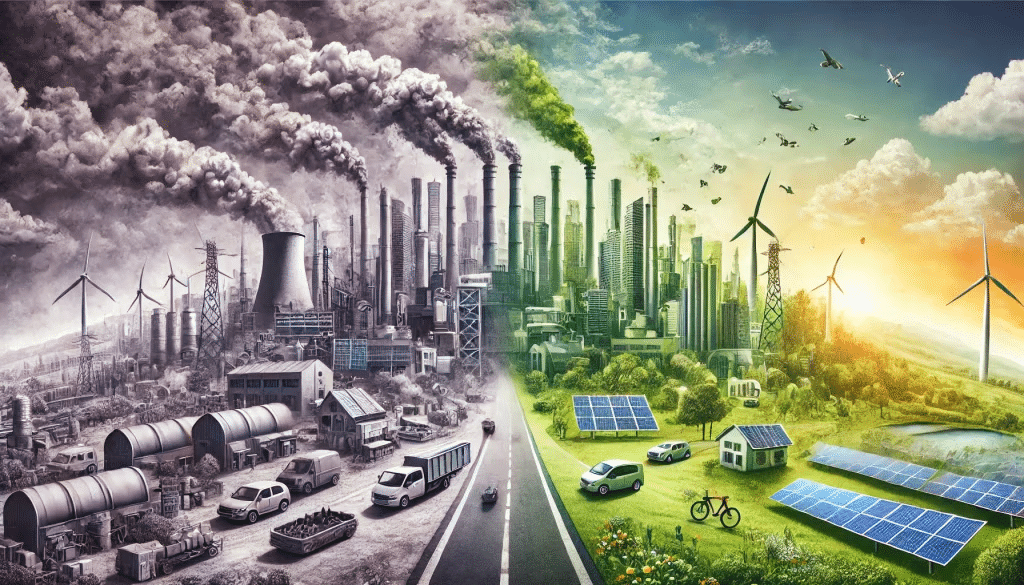
Why in News?
Recent research has highlighted concerns that climate change may disrupt the Methane Cycle in the Amazon rainforest, potentially leading to severe global repercussions. The methane cycle encompasses the processes that govern the production, consumption, and release of methane (CH4) in the environment.
Key Highlights of the Research on Methane
Floodplain Ecosystems
- The Amazon's floodplains, which are waterlogged regions, account for up to 29% of global wetlands.
- Climate change raises the risk of proliferation of methane-producing microbes in these areas.
Upland Forests
- These forests act as methane sinks.
- Research indicates a 70% drop in methane uptake in upland forest soils under warmer, drier conditions, indicating a reduced ability to mitigate methane emissions.
Methane Cycling
- The study examined methanotrophic microorganisms, which are responsible for consuming methane.
- Isotope analysis revealed active roles of both aerobic and anaerobic methane-consuming microbes in floodplains, underscoring complex methane cycling interactions in the Amazon.
What is a Methane Cycle?
- The methane cycle involves various sources, such as wetlands, which release methane into the atmosphere.
- Simultaneously, there are mechanisms for trapping or destroying methane.
- Soil is where methane is generated by methanogens, while methanotrophs, which thrive in the oxygen-rich upper soil layers, consume this methane.
- Methane from various sources, including landfills, livestock, and fossil fuel exploitation, enters the atmosphere.
- The primary method for removing methane from the atmosphere is through oxidation by hydroxyl radicals (OH), which act as natural cleansers of pollutants.
- After interacting with OH, atmospheric methane is converted to CO2 through a series of chemical reactions.
- Some atmospheric methane can migrate to the stratosphere, where similar processes occur for its removal.
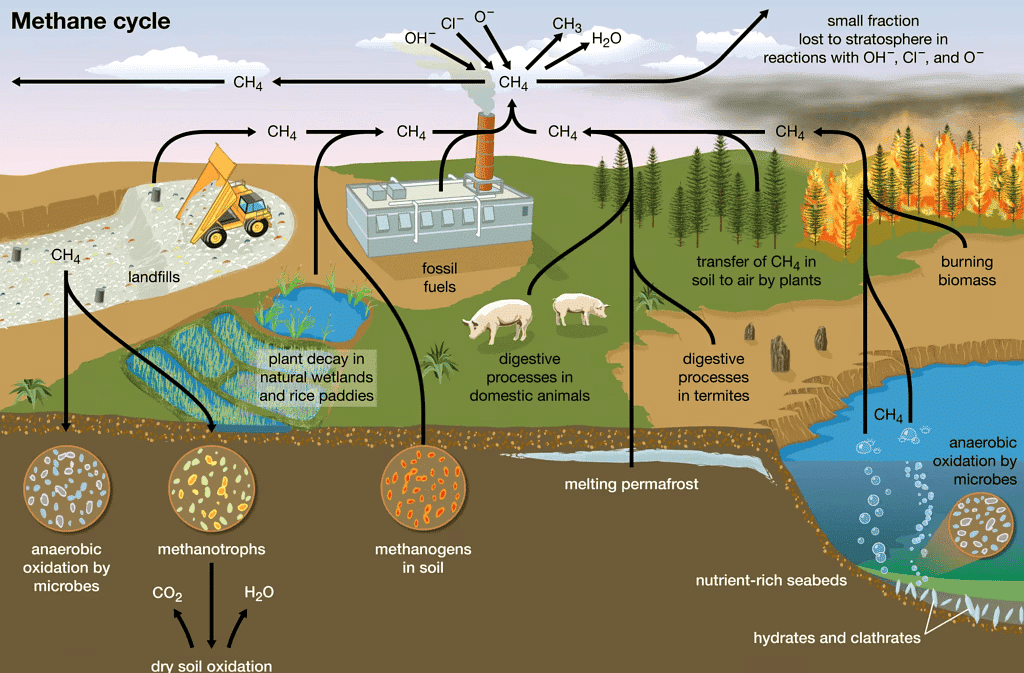
How Global Warming Can Impact Methane Cycle?
- Imbalance in Sources and Sinks:In a balanced scenario, methane sources and sinks would align, similar to CO2. However, human activities have increased global methane concentrations, causing concern. As the planet warms, further methane release from soils and other sources may exacerbate global warming.
- Methane Clathrates:These are methane crystals found in cold, oxygen-poor undersea sediments and permafrost, which are permanently frozen soils in colder regions. Methane hydrates, resembling ice, are made of water molecules encapsulating methane molecules.
- Role of Clathrate Deposits:Initially, clathrate deposits acted as methane sinks. However, warming temperatures are melting these cold sediments, releasing methane into the atmosphere, which aggravates greenhouse gas effects by trapping heat.
How Disruption in the Methane Cycle Can Have Global Consequences?
- Contributor to Global Warming:Methane is the second most significant driver of climate change after carbon dioxide. With a global warming potential 28 times that of CO2 over a century, even minor methane emissions can have substantial impacts.
- Halts Checking Global Warming Efforts:Data from the United States National Oceanic and Atmospheric Administration indicated that even as CO2 emissions decreased during the Covid-19 lockdowns in 2020, atmospheric methane levels surged.
- Health Impacts:Methane contributes to the formation of tropospheric ozone, a harmful air pollutant responsible for approximately 1 million premature respiratory deaths globally. Increased methane emissions account for half of the observed rise in tropospheric ozone levels.
- Effects on Air Quality:Heightened methane emissions reduce hydroxyl radicals (OH), which naturally cleanse the atmosphere of pollutants, allowing harmful substances to persist longer and degrade air quality.
- Agriculture Impacts:Methane contributes to annual staple crop losses of up to 15% due to elevated atmospheric temperatures and tropospheric ozone formation.
- Economic Impacts:Methane's influence on climate change and public health leads to an estimated loss of around 400 million work hours globally due to extreme heat conditions.
- Biodiversity Threats:Climate change driven by methane disrupts ecosystems, causing shifts in species distributions and destabilizing ecological interactions, which adversely affect plant and animal health.
How Can We Balance the Methane Cycle?
- Enhanced Landfill Design:Implementing lining systems and gas collection wells in landfills can capture methane for energy use, preventing its escape into the atmosphere.
- Livestock Management:Utilizing additives like seaweed or specific enzymes can reduce methane emissions from ruminants, aiding in mitigation efforts.
- Aerobic Treatment Methods:Technologies such as aerobic digestion can effectively eliminate organic matter from wastewater without generating methane.
- Rice Cultivation Practices:Alternative wetting and drying methods in rice cultivation can minimize methane emissions by reducing the duration fields remain flooded.
- Soil Health Management:Improving soil health through organic fertilizers and crop rotation can lower methane emissions by fostering aerobic conditions less conducive to methane production.
- Pest Management:Research into eco-friendly pest management strategies may help regulate termite populations that contribute significantly to methane emissions.
- Coastal Ecosystem Restoration:Protecting and restoring coastal ecosystems like mangroves and salt marshes can enhance their capacity to absorb carbon and mitigate methane emissions from sediments.
- Safe Extraction Practices:When extracting methane hydrates for energy, it is crucial to develop safe technologies that minimize methane leakage.
- Reducing Fossil Fuel Use:Transitioning to renewable energy sources can help decrease overall methane emissions linked to fossil fuel extraction and consumption.
Mains Question
Q: Discuss the significance of the methane cycle in the context of climate change. What are the major sources and sinks of methane?
Haber-Bosch Process and Production of Fertilizers
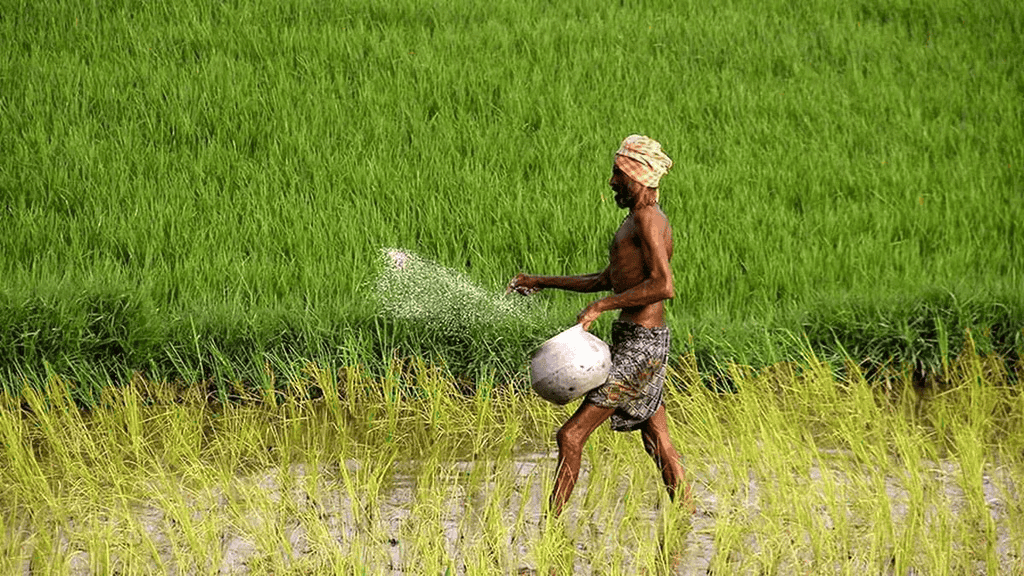
Why in News?
The Haber-Bosch process plays a crucial role in extracting around one hundred million tonnes of nitrogen from the atmosphere, converting it into fertilizers and adding approximately 165 million tonnes of reactive nitrogen to the soil. This process is significant when compared to natural biological mechanisms that produce around 100-140 million tonnes of reactive nitrogen each year.
What is the Haber-Bosch Process?
About:
- This is a key industrial method used to synthesize ammonia by combining atmospheric nitrogen with hydrogen, making it essential for fertilizer production.
Process:
- Experimental Setup: The reaction takes place in a steel chamber under a pressure of 200 atmospheres, ensuring efficient circulation of the nitrogen-hydrogen mixture. A specially designed valve withstands high pressure while allowing the N₂-H₂ mixture to flow through. The system developed by Haber recycles heat from outgoing hot gases to incoming cooler gases to optimize energy efficiency.
- Catalyst Development: Various materials were initially tested to find suitable catalysts for speeding up the reaction. Osmium was one of the effective catalysts that successfully broke the nitrogen triple bond, allowing ammonia production. Although uranium was also effective, both osmium and uranium proved too costly for large-scale production. Ultimately, specific iron oxides were identified as more economical catalysts.
Applications:
- Manufacturing: Used as a refrigerant in industrial refrigeration systems and air conditioning.
- Household: An ingredient in cleaning products, including glass cleaners and surface cleaners.
- Automotive Fuel: Research is ongoing into using ammonia as an alternative fuel for internal combustion engines.
- Chemicals: Serves as a precursor for various chemicals, including nitric acid and explosives.
Key Milestones:
- In 1913, a German chemical company launched its first ammonia factory, marking a significant advancement in fertilizer production.
- Fritz Haber received the Nobel Prize in Chemistry in 1919 for his contributions to ammonia synthesis.

What is the Nitrogen Cycle?
- Plants absorb reactive nitrogen from the soil in the form of nitrogen-based minerals like ammonium (NH4+) and nitrate (NO3–), dissolved in water.
- Humans and animals depend on plants for nine essential nitrogen-rich amino acids, as nitrogen constitutes about 2.6% of the human body.
- After consumption, nitrogen is returned to the soil through excreta and the decomposition of dead organisms, although some nitrogen escapes back into the atmosphere as molecular nitrogen, resulting in an incomplete cycle.
Natural Availability of Nitrogen:
- Lightning: Lightning bolts possess enough energy to break the N2 bond, combining nitrogen with oxygen to create nitrogen oxides (NO and NO2). These oxides interact with water vapor, forming nitric and nitrous acids, which fall as acid rain, enriching the soil with reactive nitrogen.
- Biological Fixation: Certain bacteria, such as Azotobacter and Rhizobia, convert atmospheric nitrogen into reactive nitrogen. These bacteria often have symbiotic relationships with plants like legumes or aquatic ferns such as Azolla, enhancing nitrogen availability in the soil and benefiting agriculture.
Process of Nitrogen Replenishment:
- While legumes can naturally fix nitrogen, staple crops like rice, wheat, corn, potatoes, cassava, bananas, and various fruits and vegetables rely on soil nitrogen for their growth.
- As human populations increase, the depletion of nitrogen in agricultural soils accelerates, necessitating the use of fertilizers to restore soil fertility.
Historical Fertilization Methods:
- Historically, farmers cultivated legumes to naturally replenish nitrogen in the soil or applied ammonia-based fertilizers to enhance crop yields.
- They also utilized ammonium-rich minerals from volcanic eruptions and naturally occurring nitrates found in caves and rocks to improve soil fertility.
What is the Impact of Industrial Production of Fertilizers?
- Pros: The Haber-Bosch process facilitated the mass production of synthetic fertilizers, significantly boosting global food supply during the 20th century and contributing to increased life expectancy. It is estimated that one-third of the world's population relies on food produced using nitrogen fertilizers. Without this industrial process, meeting the growing global food demand would have been unfeasible.
- Cons: Despite their importance for food production, synthetic nitrogen fertilizers have detrimental environmental effects. Excessive nitrogen application can lead to over-nourishment of plants, enhanced bacterial activity, and increased nitrogen release into the atmosphere. This contributes to environmental degradation, soil erosion, and deoxygenation of surface water through runoff, resulting in excessive weed growth in aquatic ecosystems.
Way Forward
- Promote Sustainable Fertilizer Use: Encourage the adoption of precision agriculture and controlled-release fertilizers to minimize nitrogen waste, reduce environmental harm, and enhance fertilizer efficiency in farming.
- Invest in Alternative Technologies: Develop and promote eco-friendly alternatives to synthetic fertilizers, such as organic farming practices, nitrogen-fixing crops, and biofertilizers to lessen the environmental impact of chemical fertilizers.
- Strengthen Policy Frameworks: Governments should implement regulations to control fertilizer overuse and incentivize sustainable farming practices, ensuring food security while safeguarding ecosystems and public health.
- Enhance Global Cooperation: Foster international collaboration to address food distribution disparities, improve access to agricultural innovations, and support capacity-building initiatives for regions facing food insecurity, ensuring equitable solutions to global food challenges.
Mains Question
Q: Critically examine the impact of synthetic fertilizers on agriculture and the environment. Discuss sustainable alternatives to mitigate these challenges.
Marine Heat Waves and Twilight Zone

Why in News?
Recently, researchers conducted a study focusing on Marine Heatwaves (MHWs) and cold spells in the largely unexplored twilight zone of the ocean. A cold spell is characterized as a prolonged period of unusually low temperatures, lasting several days or more.
Key Findings Related to MHWs
- Marine heatwaves (MHWs) occurring in the deep ocean are often under-reported.
- To accurately monitor temperature variations at significant depths, specialized buoys were deployed globally for comprehensive data collection.
- Argo floats, which are robotic devices capable of diving to depths of 2,000 meters and resurfacing, were utilized to collect essential temperature and salinity data.
- While global warming primarily influences surface ocean temperatures, its effects on deeper oceanic waters reveal complex, less understood impacts of climate change on marine ecosystems.
- Unlike surface marine heatwaves, which can be influenced by atmospheric conditions, temperature changes in the deep ocean are primarily driven by eddy currents.
- Eddy currents are large, swirling loops of water that can extend over hundreds of kilometers and reach depths exceeding 1,000 meters, playing a vital role in the transportation of warm and cold water over vast distances.
- The overall warming of the ocean is leading to the intensification of eddy currents, which in turn exacerbates extreme temperature fluctuations.
MHW Impact on Biodiversity
- Extreme shifts in temperature pose significant risks to biodiversity in the ocean, particularly affecting numerous fish species and plankton.
- Plankton are crucial components of the oceanic food chain and serve as a primary food source for smaller fish.
- MHWs can lead to decreased oxygen levels and nutrient depletion in water, threatening marine life and disrupting the ecological balance.
Biopolymers

Why in News?
- The union minister recently opened India's first Demonstration Facility for Biopolymers in Pune.
About Biopolymers
- Biopolymers are materials made from natural sources like fats, vegetable oils, sugars, resins, and proteins.
- They have more complex structures than synthetic polymers, which makes them more effective in living organisms.
- Since biopolymers are biodegradable, they can break down easily with the help of bacteria in the soil. This is much better for the environment compared to synthetic polymers, which can cause pollution when burned.
Characteristics
- Biopolymers can influence the life processes of living beings and are environmentally friendly.
- They can be broken down through processes like:
- Oxidation (mainly reacting with oxygen)
- Hydrolysis (breaking down with water)
- Action of specific enzymes.
- Some biopolymers are compostable and can have special chemical properties on their surfaces.
- Examples of biopolymers include polylactic acid, polyglycolate, and poly 3-hydroxybutyrate, which can behave like plastics.
Benefits
- Biopolymers can help lower carbon dioxide levels in the air and reduce carbon emissions.
- This is because the breakdown of these materials can release carbon dioxide that can be taken back in by plants grown to replace them.
Blackbuck (Antilope cervicapra)

Why in News?
The blackbuck (Antilope cervicapra) is an antelope species native to India and Nepal. It can be found widely across peninsular India, particularly in the states of Rajasthan, Gujarat, Madhya Pradesh, Tamil Nadu, Odisha, and more.
- The blackbuck typically stands between 74 cm and 84 cm tall. Males weigh around 20-57 kg, while females are lighter, weighing between 20-33 kg. They can run at a speed of 80 km/h and have a lifespan of 10 to 15 years.
- According to the IUCN, the blackbuck is classified as Near Threatened.
- The male blackbuck has a distinctive dark brown to black coat, making it easy to recognize. This species is considered an ideal example of a grassland antelope. It is one of the fastest land animals, second only to the cheetah.
- Blackbucks are mostly active during the day and have been designated as the state animal of Punjab, Haryana, and Andhra Pradesh.
Overview of Blackbuck Indian Antelope
| Particulars | Description |
|---|---|
| Latin Name | Antilope cervicapra |
| Lifespan | On average, 12 years |
| Found In | Open woodlands, grasslands, semi-desert areas, thorny regions, and deciduous forests with grasslands |
| Length of Horn | 35 to 75 cm |
| Habitat | Punjab, Haryana, parts of Uttar Pradesh, Rajasthan, Madhya Pradesh, Gujarat, and as far south as Tamil Nadu |
| Head to Tail Length | 120 cm |
| IUCN Status | Least Concern (LC) |
Characteristics of Blackbuck Indian Antelopes
- The blackbuck is a medium-sized antelope, standing between 74 cm and 84 cm tall.
- It is the only living member of the Antilope genus.
- Blackbucks have unique facial features, including black stripes that contrast with the white fur around their eyes and chin.
- Males have a two-toned coat: the underside and inside of their legs are white, while the upper parts are dark brown to black.
- They form groups based on gender: females, males, and bachelor herds, and are active during the day.
- Only males usually have long, corkscrew-shaped horns, although some females may have them as well.
- Blackbucks from northern and western India often have longer and more noticeable horns.
Habitat and Distribution of Indian Blackbuck Antelope
- The blackbuck is active during the day, becoming less active around noon. It can reach speeds of up to 80 km/h. Blackbucks prefer grassy plains and areas with sparse trees where they can find water throughout the year.
- Herds travel long distances to find water. Males mark their territory based on where female groups are located. Their habitat includes regions in Southern and Central-Western India, especially in Madhya Pradesh, Rajasthan, Gujarat, Punjab, Haryana, and Odisha (including Karnataka, Andhra Pradesh, and Tamil Nadu).
Diet of Indian Blackbuck Antelope
- The blackbuck mainly eats low grasses but also browses occasionally. Its preferred foods include sedges, fall witchgrass, mesquite, and live oak. In the Cholistan Desert, blackbucks have been seen feeding on acacia trees.
- In captivity, they enjoy oats and berseem as nutritious foods. During summer, their nutrient digestion, especially for crude proteins, is less efficient, but it improves in the rainy and winter seasons.
- In summer, blackbucks consume less food than in winter and often rely on the fruits of Prosopis juliflora when grasses are scarce. Daily water intake is crucial for their survival.
Blackbuck Population in India
- The IUCN reported an unknown population trend in a study published in 2016. The study counted around 35,000 mature blackbucks globally. Despite a decline in their habitat and numbers over the last century, blackbucks remain common in some parts of South Asia, are increasing in many protected areas, and are even becoming a nuisance in some agricultural regions.
- A more recent study from 2021 estimated the global blackbuck population to be around 50,000. While their range has decreased due to habitat loss, this has been somewhat offset by converting dense scrub and woodlands into agricultural land, creating new habitats. The species has adapted to agricultural boundaries, and clearing scrub has generally been beneficial.
Threats to Indian Blackbuck Antelope
- The blackbuck population significantly declined in the 20th century due to excessive hunting, deforestation, and habitat destruction. Illegal hunting, especially in areas where blackbucks live alongside nilgai, remains a serious threat.
- Before India gained independence in 1947, blackbucks, along with chinkaras, were hunted in many princely states using trained Asiatic cheetahs. By the 1970s, blackbucks had become locally extinct in several areas.
Conservation of Blackbuck Indian Antelope
- The Wildlife Protection Act of 1972 includes blackbucks in its Schedule I, prohibiting their hunting in India. In 2017, the state government of Uttar Pradesh approved the establishment of the Blackbuck Conservation Reserve near Prayagraj, marking the first conservation reserve specifically for blackbucks.
- However, a recent evaluation in 2016 found that blackbucks are considered Extinct (EX) in Pakistan. The Lal Suhanra National Park is home to a large and thriving population of blackbucks. Researchers need to focus on estimating the blackbuck population in protected areas of Pakistan, as noted in an IUCN report from 2017. In Nepal, the blackbuck has been labeled as Critically Endangered.
Blackbuck IUCN Status
- Over the past thirty years, the blackbuck's status on the IUCN Red List has changed three times. It was classified as Vulnerable from 1994 to 1996, then Near Threatened from 2003 to 2008, before becoming Least Concern (LC) afterwards, which is its current status.
- The IUCN estimates that the blackbuck population in India rose from 22,000 in the 1970s to over 50,000 by 2000. Before India's independence, the blackbuck was used as a heraldic symbol by seven princely states.
Cultural Significance of Indian Blackbuck Antelope
- The blackbuck holds a special place in Indian culture. It may have been a food source for the Indus Valley civilization (3300-1700 BCE), as antelope bones have been found in archaeological sites like Dholavira and Mehrgarh. Mughal miniature paintings from the 16th to 19th centuries often depict blackbucks in royal hunting scenes with cheetahs. Many villagers in India and Nepal do not harm blackbucks, and tribes like the Bishnois protect them.
- Sage Yagyavalkya is quoted in the Yjavalkya Smti, suggesting that certain religious rites, including sacrifices, should not occur where blackbucks are found.
- The blackbuck is referred to as the Krishna rig in Sanskrit texts and is said to pull Lord Krishna's chariot in Hindu mythology. It symbolizes several deities, including Vayu (the wind god), Soma (the celestial drink), and Chandra (the moon god).
- In Tamil Nadu, the blackbuck is revered as the chariot of the Hindu goddess Korravai, while in Rajasthan, it is protected by the goddess Karni Mata. Its skin and horns are considered sacred in Hinduism, symbolizing purity, and it is viewed as a lucky emblem in Buddhism.
|
164 videos|632 docs|1152 tests
|
















